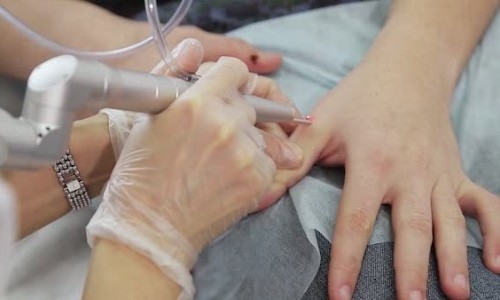
It is a Latin word and its origin is based on Greek and Roman mythology. Hymenaeus, god of marriage, is the son of Dionysus, god of wine, and Aphrodite, god of beauty. Since the wedding night was dedicated to this god in ancient Greece, the hymen was called hymen. It has been accepted as a symbol of honor, untouchedness, purity, that is, virginity in some societies from history to the present.
HYMEN Localization
The hymen is located approximately 1-1.5 cm from the entrance of the vagina. The hymen forms the border between the internal genital organs and the external genitalia. It is located between the beginning of the vagina and the vestibulum of the vagina.
HYMEN Structure
Although the hymen is usually expressed as a membrane, it is not as thin as a membrane, but in a mucosal structure with a thickness of around 1-1.5 mm. The hymen usually contains a cavity in the middle that can take various forms to allow menstrual blood to flow out. The place where the hymen joins with the vaginal wall forms the base of the hymen, and this area is thicker and has more blood supply. It is thinner in the middle part of the hymen, especially on the edges surrounding the borders of the cavity, and its blood supply is less.
HYMEN'S Mission
The physiological function of the hymen has not been clearly explained. It is thought that its task in the embryological period may be to cut off the contact of the internal genital organs with the early amniotic fluid and its contents. It is thought that its task after birth is to prevent foreign body entry into the vagina, especially during childhood.
Today, the hymen is concerned with its sociological function, not its anatomical or physiological function.
HYMEN Varieties
The hymen contains holes to allow the discharge of menstrual blood. It takes various names according to the shape, number and size of these holes. Approximately nine types of hymen are known.
- Annular Hymen
- Crecentric Hymen
- Septal Hymen
- Half-septal Hymen
- Kripriform Hymen
- Microperforated Hymen
- Fimbrial Hymen
- Flexible Hymen
- Imperforate Hymen
Reasons for HYMEN Operation
Hymen can be damaged in external genital organ traumas due to its thin mucosal structure and location, except for sexual intercourse. Damage may occur if contact with the hymen develops during falls, traumatic sports, and masturbation.
Reasons for HYMEN Operation
They are operations that are often performed in closed societies for social reasons. In western societies, it is mostly made for fantasy purposes.
HYMEN Repair (Hymenoplasty) Techniques
Hymen repair varies according to the patient's condition, conditions and wishes. The most important determining factor here is usually when the patient will have intercourse after the operation, that is, the duration. Hymen repair is independent of the patient's previous number of sexual intercourse.
The purpose of hymenoplasty is to provide bleeding in the first intercourse after the operation. Hymenoplasty techniques are very diverse and differ in terms of the way they are performed and their effectiveness. It can be divided into 2 groups according to the duration of permanence.
Temporary Hymenoplasty
- • Repair of the injured part of the hymen
- • Suturing the reciprocal hymen wall
- • Circulation method
- • C-type suture of bilateral walls
Temporary Hymenoplasty
- • Posterior flap method
- • Dağhan Işık et al. 3-fold flap method
- • Özkan technique (3 flap shifting technique)
Bunlar da İlginizi Çekebilir

Labiaplasty (Inner and Outer Lip Aesthetics)
One of the genital aesthetic problems is inner and outer lip asymmetry. Inner lips may be larger tha ...
Read more
Surgical Vaginal Tightening
The vagina is the female sexual organ and is an organ consisting of mucous, fibrous connective tissu ...
Read more
Laser Wart Treatment (HPV Infection)
Warts (Condilom) are raised skin lesions caused by the virus called HPV (Human Papilloma Virus). It ...
Read more

